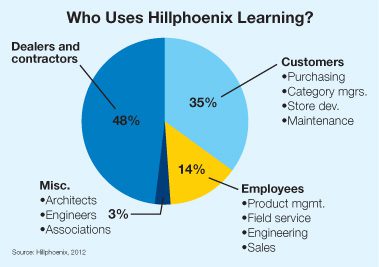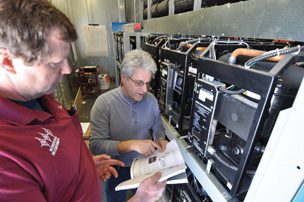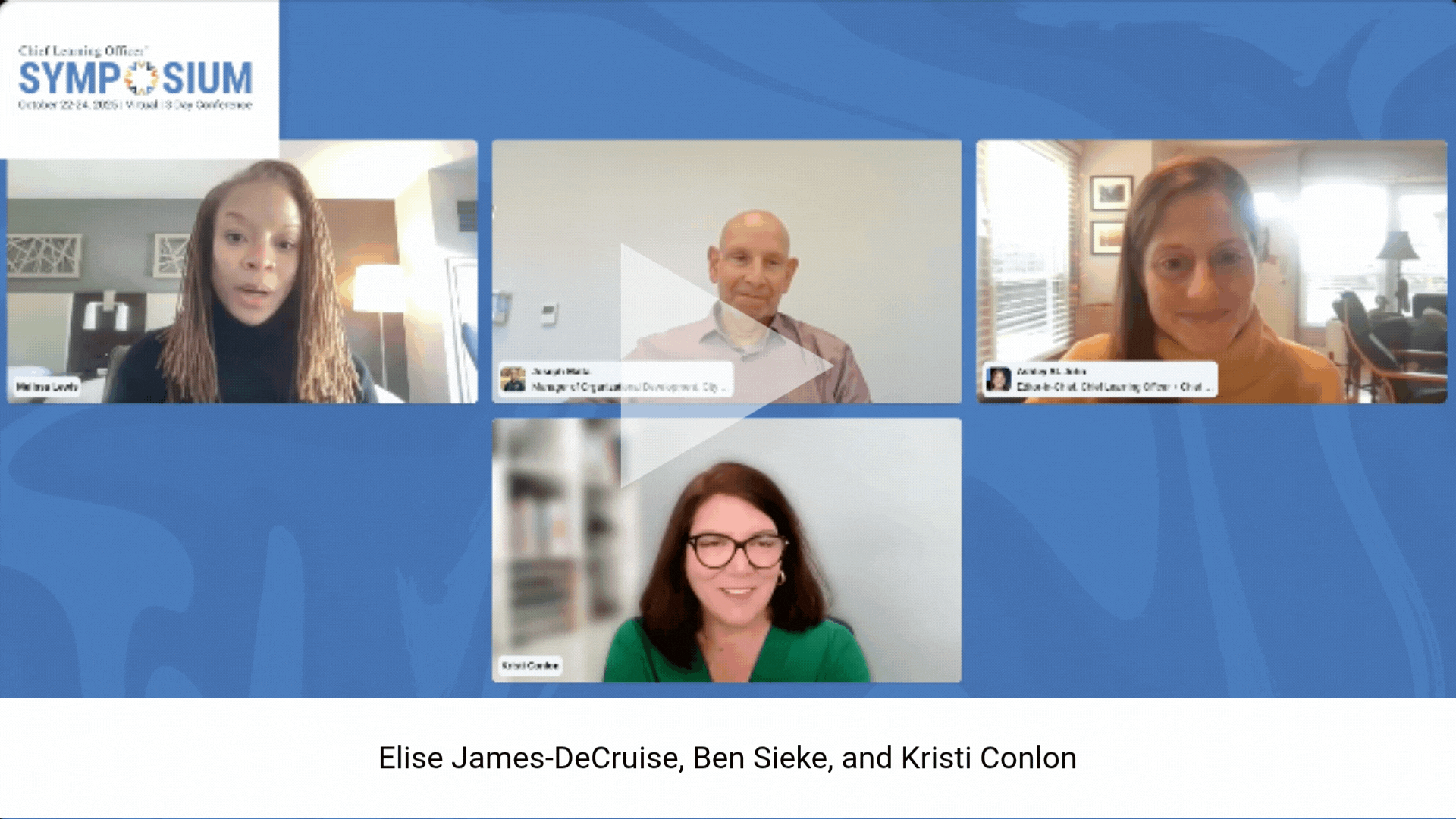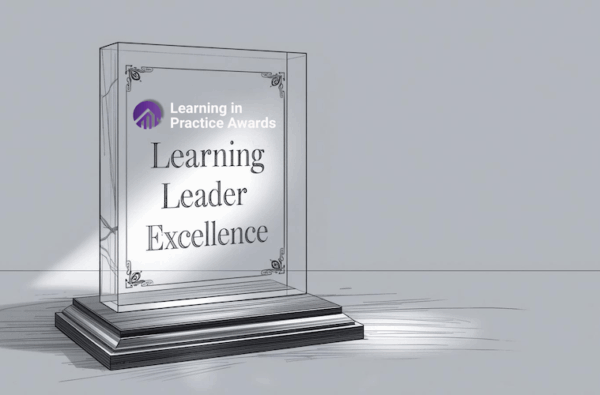SNAPSHOT:
For the past seven years commercial refrigeration provider Hillphoenix’s Learning Center has provided training to more than 10,000 industry professionals, ranging from service contractors and engineers to store development and procurement personnel. To facilitate easy adoption of new technologies and offer the necessary knowledge to help customers get the most out of equipment in their stores, the company is now accelerating training, providing shorter modules on-demand.
As one of the largest providers of commercial refrigeration in North America, Hillphoenix leaders find it important to be on the front lines of new product innovation. But innovation is often met with market uncertainty, particularly in industries such as commercial refrigeration where there is a predominant wait-and-see attitude toward new technologies. The Hillphoenix Learning Center was created in 2006 to serve as an innovation catalyst for the entire commercial refrigeration ecosystem: retailers, contractors, dealers, purchasing departments, construction managers, merchandisers and other manufacturers.
Today, the Learning Center has grown from a small series of instructor-led classes for internal training to become an industry-wide resource that mixes live, instructor-led seminars, online/distance learning, webinars, intentional learning and mini-videos called TechTips.
While investments in technology and sustainability are generally accepted as the right thing to do, in today’s hyper competitive supermarket industry, retailers need to see an immediate return on investment. Quality education and development is an effective way to ensure retail customers understand the tangible benefits. Hillphoenix provides that education to retailers, customers and prospects, contractors, dealers, purchasing professionals, construction managers and merchandisers.

From Building to Teaching
“For years, customers — supermarkets and retailers — complained about a lack of qualified technicians in the industry,” said Henry Pellerin, director at Hillphoenix. “We recognized that in order to be successful as a manufacturer of commercial refrigeration equipment, we should take on some of the responsibility to train and educate those who buy, sell and maintain our equipment.”
Commercial refrigeration purchasing decisions are often made by a retailer in consultation with trusted contractors and dealers. If those key influencers aren’t familiar with a new technology, they’re not likely to recommend it, nor are they prepared to help retailers extract the most value from their investment.
Frank Davis, senior facility engineering manager for specialty grocery store Sprouts Farmers Market, is responsible for choosing what goes into new stores — from refrigeration systems to heating, ventilation and air conditioning — and he continues to oversee the operation and maintenance of equipment throughout its lifespan.
Davis relies on his trusted network of industry colleagues to vet new technologies. Before considering investing in a new technology for his stores, he first goes to the manufacturer for information. Then he reaches out to members of his LinkedIn network to ask, “Does anybody know about this new technology?”
“In the past, when a manufacturer came out with a new technology, they really didn’t educate folks in the industry. You can’t expect a new technology to be successful if people don’t know about it and can’t work on it,” Davis said. “Personally, as a tech guy, I like the new technologies. But when Sprouts is considering investing in something new, the first question that comes up is ‘Can somebody work on this, and has it been proven? The Learning Center helps answer those questions.”
It’s not easy for a manufacturing company to make a million-dollar foray into the learning business, so Hillphoenix first set out to learn from other large manufacturing companies. Pellerin met with learning professionals from Purina and Emerson, as well as technical colleges and other companies recognized for their learning and development programs.
In 2006, a cross-functional team consisting of Hillphoenix sales and marketing professionals, contractors, dealers, engineers and service professionals gathered for a weeklong planning session. The goal was to create a world-class learning center from the ground up. By the end of the week, the team had created the road map, operational plan and the Hillphoenix Learning Center design document, which included plans for content, materials, record keeping, user experience and promotions.
The company’s first homegrown LMS was launched six months later under Pellerin’s newly formed Learning Center team.
“In the beginning we didn’t know if people would show up,” he said. “Our first program was in September 2006, and we had 75 people. Of those 75, I think 90 percent were internal Hillphoenix people. This was something entirely new in our industry, and we had to establish credibility.”

Within two years the company had outgrown its LMS and switched to a semi-customizable, off-the-shelf LMS that sustained itself for another two years. All the while, Learning Center participation grew, and programs evolved to include blended and intentional learning.
“That’s when we decided to take everything that we’d learned and work with a developer to create a proprietary platform that is ours from the ground up, designed specifically to meet our needs and our desire to grow,” Pellerin said.
In 2012, Hillphoenix launched the third online iteration of its Learning Center, with more courses, a revved-up intentional learning program and the ability to access learning modules via mobile device.
Employees using the new Learning Center can access learning from a variety of devices in multiple formats and quickly deliver timely product updates and technical bulletins and respond to requests from participants. Mini-videos are used when trainers want to deliver smaller bits of time-sensitive information.
The new Learning Center platform also includes style sheets for Windows and Mac users. Servers detect the type of device being used and the speed of the user’s connection so data is packaged and delivered properly.
Last year Hillphoenix added more technology courses based on customer demand, as well as courses covering the company’s specialty products, such as custom-built refrigeration cases, which represent a smaller niche collection. Later this year it will launch Supermarket Sense, a program for operations and merchandising training. This downstream delivery of information reaches deep into customer organizations and reinforces the Hillphoenix brand through service and support.
“Supermarket Sense will help us get involved with customers beyond the construction of a new store and lets us touch merchandisers and operations professionals — those who ultimately interact with our products on a daily basis,” Pellerin said.
Today, Learning Center participants pay anywhere from $50 to $250 per course, which is typically paid for by the participant’s company. What started out as a seminar-based program with 75 participants has trained more than 13,000 industry professionals and has more than 5,000 online subscribers who can use a variety of learning formats.
Learning, Not Marketing
Outsider skepticism was a hurdle to overcome in launching the Learning Center. To be successful it had to be an authentic learning environment, not a marketing pitch. Curriculum development follows a process outlined in the design document, which provides specific requirements for learning objectives, content creation and delivery protocol. Created in 2006, the design document has evolved over the years, but remains the foundation for Learning Center development.
Every participant takes an end-of-course survey that feeds into a continuous improvement process. Results are reviewed by internal subject matter experts — engineers and designers — or by third-party experts. The Learning Center consistently earns an average feedback score in the 96.8 percentile on a five-point rating scale.
“We also had to get buy-in internally; we had to make believers out of every person in every division,” Pellerin said. “We have made Learning Center training a mandatory part of our product development process. Before a product is ready to go out to the marketplace, it must be accompanied by a training program.”
Hillphoenix programs also have become a resource for membership associations throughout the industry.
“As in all dynamic businesses, food retail is a complicated and ever-evolving industry drawing heavily upon technological advancements and manufacturing innovations. This means providing education and resources for our members is an ever-moving target, and FMI relies heavily upon companies like Hillphoenix to help us stay on the cutting edge of the equipment guidance, current industrial advancements and scientific innovations,” said Leslie Sarasin, president and CEO of Food Marketing Institute (FMI), a membership organization composed of nearly 1,250 food retail and wholesale member companies globally.
Hillphoenix’s investment in the Learning Center has been justified many times over as new products have made their way from research and development to market.
“We have seen our adoption rate for new technologies go from maybe a year or nine months down to about three months,” Pellerin said. “In other words, when a new product launch is immediately supported by a robust training program, people feel more comfortable about purchasing, installing, using and maintaining even unfamiliar new technologies.”
Early in the launch of the Learning Center, Pellerin and his team needed to prove a return on investment to continue receiving internal support. In 2005, the company launched its new line of Second Nature natural refrigerant systems just as the Environmental Protection Agency was beginning to mandate restrictions on ozone-depleting synthetic refrigerants. While an impending phase-out of synthetic refrigerants loomed on the distant horizon, Hillphoenix needed to convince customers that new green technologies were a wise short-term investment.
One year after the Learning Center launched, sales for Second Nature systems grew 400 percent. This jump coincided closely with the launch of Second Nature technology-specific training programs.
Pellerin attributes about 75 percent of that sales growth to the Learning Center. Since its customers rely on a network of trusted contractors for insight regarding new equipment purchases, an educated industry is one of Hillphoenix’s most effective sales and marketing tools.
“The Learning Center has become an integral part of our internal culture and our image as a company throughout the industry,” Pellerin said. “We feel like we’re giving back to the industry that’s taken care of us for so many years. And in return, we’re being rewarded.”
Bill Katz is technical writer and course developer for the Hillphoenix Learning Center. He can be reached at editor@CLOmedia.com
















